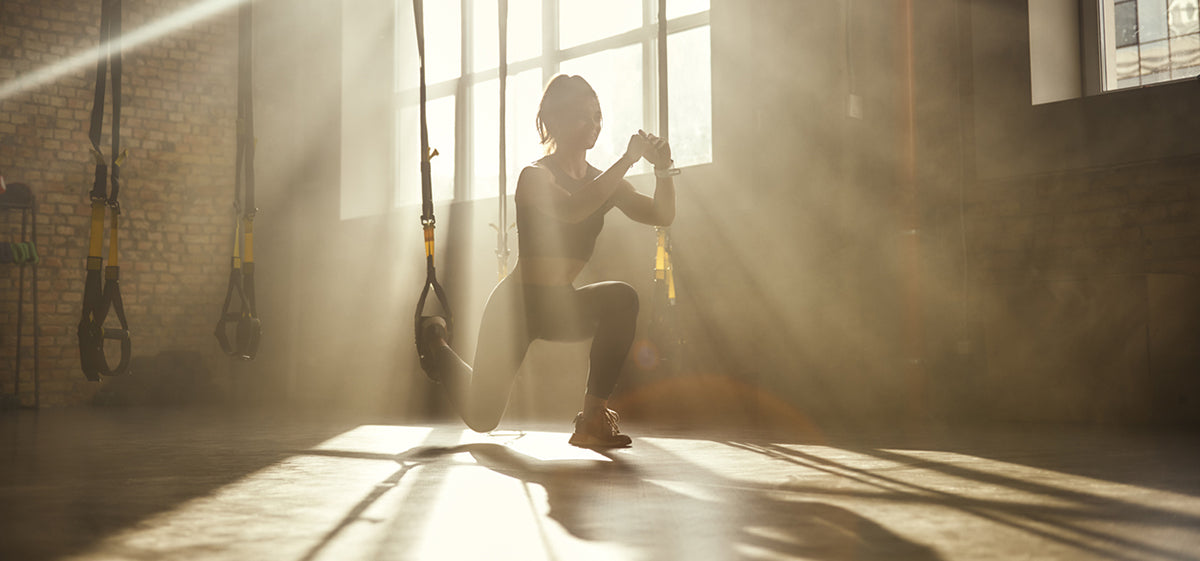There is no better way to improve a skill than to practice it. For example, runners need to run; baseball pitchers need to throw the ball; cyclists need to ride. Outside of practicing these skills, functional training can enhance them while helping to reduce injury risk and improve competence in daily activities.
So, what is functional training?
At its essence, functional training is about selecting movements and designing programs to improve an individual’s performance in sport and life. A key takeaway of functional training is that what is “functional” will be different for every individual. As such, exercise selections and training programs must be optimized for the goals of each person.
While there is no hard and fast rule on functional training, these movements generally should:
- Integrate, rather than isolate: Functional training focuses on motion, not just muscles. These movements typically involve multiple muscle groups, various joints, and move you in different dimensions.
- Train the body for daily activities: Functional training replicates coordination, contraction, movement speed, and range of motion of sport and life activities. Functional movements do not require circus-style coordination and balance movements – instead, they need to be practical and performed at an appropriate intensity level.
Functional Training Checklist
To determine if a movement is functional for you, check out our checklist. When making your selections, you should tick some of the boxes below:
- Make it relevant to your goals, abilities, and needs: Start by identifying what areas of your life or sport performance you’d like to improve. For example, if you’re a runner, you might want to alleviate or minimize knee pain by performing drills to better activate the gluteus muscles. Single leg balance exercises and single-leg deadlifts with load can help recruit these muscles and strengthen the glutes.
- Engage your core: Our core connects us. Integrated movements activate our core muscles – our abdominals, spine stabilizers, glutes, and hip flexors, to name a few. Functional movements could be viewed as traditionally core-centric, such as an isometric or active glute bridge, or core-engaging, such as wood chops with tubing or balance drills.
- Develop neuromuscular control: Movements that challenge mobility (the ability to have motion), stability (the ability to stop and/or decelerate movement with control), and reaction time are among those that help our bodies improve our response to stimuli – whether that’s in sport (catching a ball) or in life (avoiding slipping on ice).
- Train motion, not just muscles: Movements that center around complete movement patterns, versus isolated actions, are often considered functional. An example of this is an air squat, in which a person crouches down and returns to a standing position. In contrast, a leg extension or leg curl would be considered less functional for most, as these are seated, stabilized exercises. However, depending on the training plan and the execution of the exercise, even stationary exercises can be used for functional purposes.
- Develop functional strength in the right direction: Functional training should be specific to your objectives and goals. When performing these exercises, make sure the movements match the size, shape, and direction of the activity you’d like to improve.
- Resemble human movement: Ask yourself – does the movement you’re doing make sense for the area you want to improve? Be cautious of elaborate, creative movements that have unclear intent. For example, lifting heavy weights on a stability ball may undercut the amount of load you could be lifting if you were on a workout bench because the ball is less stable. If there’s a purpose to it – great! But sometimes more is less.
When building or selecting a functional training exercise or program, remember that each individual’s functional training needs are unique. While athletes may seek to boost sport-specific performance, active aging individuals may favor functional movements to reduce fall risk and increase longevity.
Always select appropriate functional movements based on your specific lifestyle and objectives. And most importantly – always keep the FUN in functional and enjoy this opportunity to map the best movement to your ultimate training goals.
One of the best benefits of functional training is that it can be done with little to no equipment, making it an excellent option for at-home workouts. Consider adding it to your existing exercise program to supplement cardio and strength workouts.
If you are looking to include functional fitness training equipment into your home gym, such as the Precor FTS (Functional Training System) Glide , to help you achieve your goals, our team of fitness experts online and our authorized Precor dealers are here to help.
References
Thompson, Walter R. Worldwide Survey of Fitness Trends for 2020. ACSM’s Health and Fitness Journal, Volume 23, No. 6, pp. 10-18, 2019.
Bryant, Cedric. What is Functional Strength Training? ACE Fit: Fit Life.
Queenax® Trainer Manual. Precor: 2016.
Studio 7 Training Manual. Precor: 2019.



Share:
Cardio Exercise Equipment Buying Guide
Inspiring Spaces To Work Out